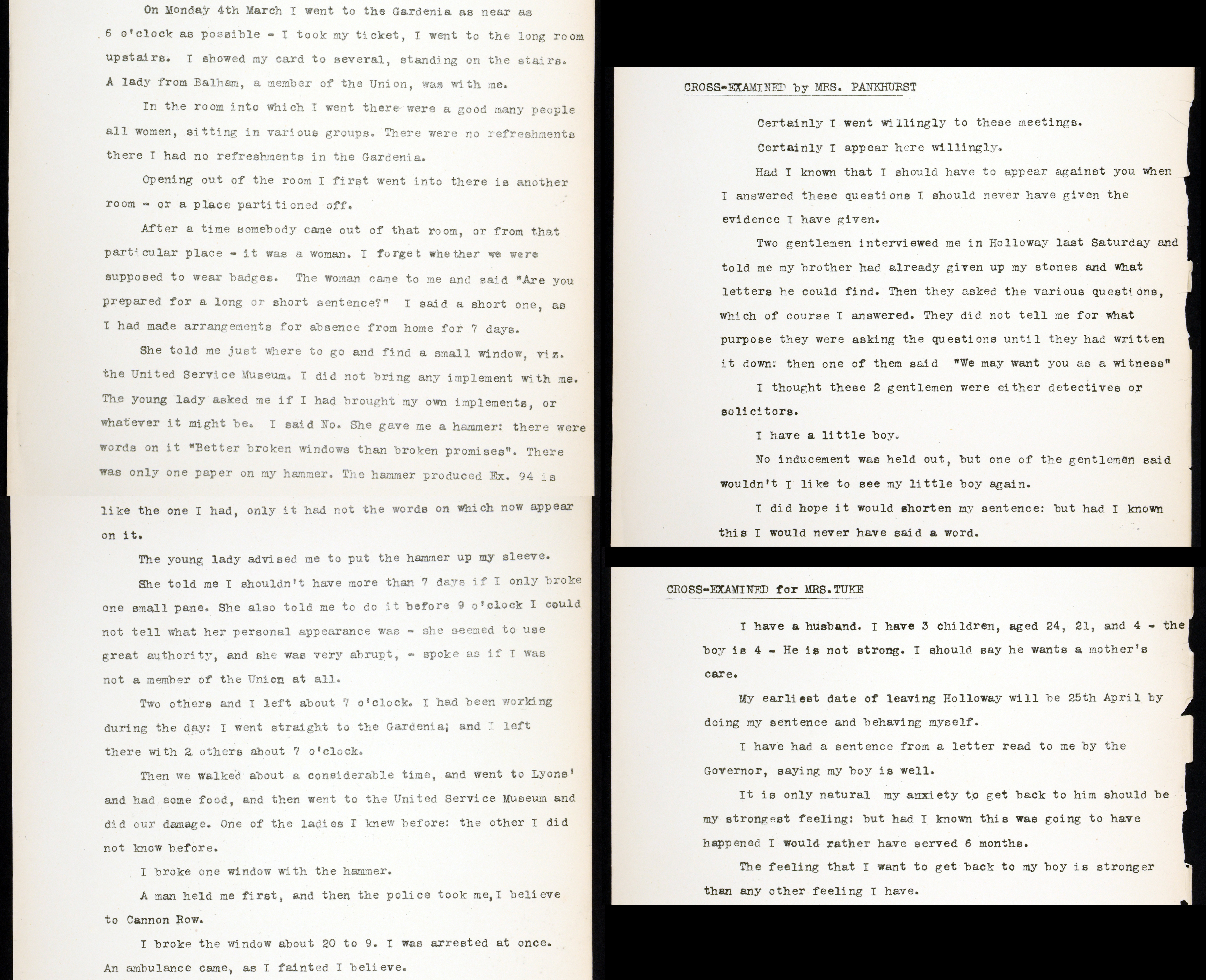Breaking Barriers Exhibition
Keep an eye out for the launch of our online research exhibition where we will be presenting the lives and stories of figures such as Lillian Ball, Minnie Baldock and many others!
Sneak peek:
Lillian Ball

It was 6 o’clock on Monday the 4th March 1912, when Lillian Ball went to Gardenia Restaurant at Covent Garden, a vegetarian cafe used by suffragettes between 1908 and 1913. Waiting in one of the rooms available to the suffragettes, another woman walked in. She asked Lillian, “Are you prepared for a long or short sentence?”.
In reply, Lillian stated she was prepared only for a short sentence, arranging 7 days of childcare and willing to risk her family’s finances. Lillian had been dressmaking the day she and two other women smashed a window at the United Service Museum. She did not take the implement she had been given at the Gardenia with her, possibly because she was hesitant towards participating in the militant action. The woman who encouraged her to participate in the militant action assured Lillian that she would not be imprisoned for more than 7 days if she ‘only broke one small plane’. One of the ladies gave her a hammer engraved with the words “Better broken windows than broken promises”.
Unfortunately for Lillian, promises were broken. After breaking a small windowpane at 8:40 pm, Lillian was held by a man before being arrested and taken away by police. She fainted. After her arrest and trial, she was imprisoned for over 2 months at Holloway Prison.
During this time, Lillian, as a working-class woman, was treated more harshly than other militant suffragettes in prison. She experienced hard labour and was blackmailed by police investigating the leaders of the suffragette movement. Fearing for the health of her weak 4-year-old son, she reflects that she was able to receive one letter from the Governor, ‘saying my boy is well’.
Coming from a working-class background as a seamstress, Lillian found a greater challenge in looking for arrangements for her 4-year-old son. She would also need to be prepared to not receive pay for her lack of work while she was arrested and possibly imprisoned. Further, she risked losing her job, on which she was financially dependent.

References:
Lillian Ball's Trial Statement: https://www.nationalarchives.gov.uk/education/resources/suffragettes-on-file/window-smashing-campaign/
Gardenia Café Information (and Image):
Image of Lillian at Royal Holloway Prison(but likely someone else):
Statement from the research team regarding the stories of male suffragettes:
The following stories are not of working-class men. Unfortunately, the working class male suffragettes are obscured by history. Those who were involved stories are hidden in the depths of archives – not possible to reach in a time of Covid-19. Often their stories are unrecorded – not written down. The men who were arrested often were not convicted.
Find out how to contribute to this gap in our research here.

